Leopard tortoises are fantastic and unusual creatures. They may be slow to the race, but they certainly know how to impress.
Known for the rich and varied markings on their shells which earned them their name, there’s a lot more to these languid creatures than meets the eye. They’re part of Africa’s Little Five for good reason, after all.
Wondering how big leopard tortoises can grow?
We’ve gathered all the information you need to know about how big they get, and what affects this growth.
Turns out, it’s a lot more complicated than you’d think.
Average Leopard Tortoise Size
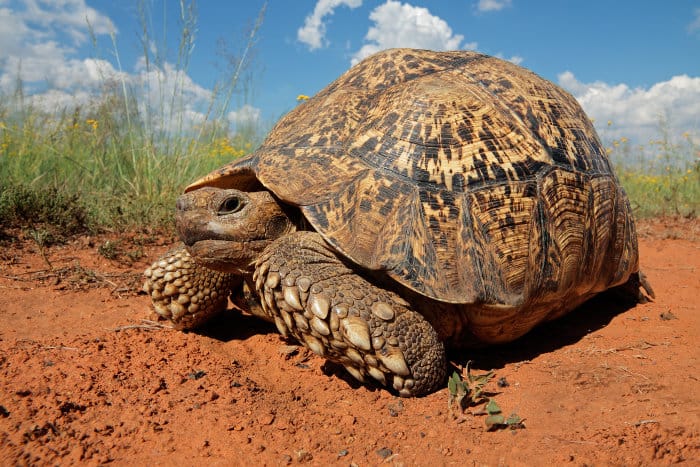
Leopard tortoises vary a lot in terms of size, depending on their habitat, diet, and gender. The average length of a full-grown leopard tortoise is 16 inches (40 cm), measured from head to tail. However, they can get as long as 28 inches (70 cm).
The average weight is 13 kilograms. But they can get as hefty as 40 kg! That’s 88 pounds, the weight of a large child.
Nevertheless, you certainly shouldn’t pick them up – especially at this size. We’ll get into why below.
Leopard Tortoise Growth Rate
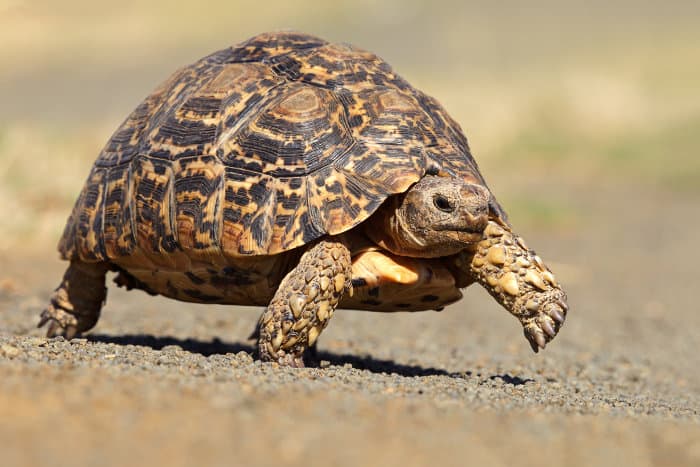
Wondering how quickly these terrific tortoises grow? The answer is a rather unclear ‘it depends’. The factors that influence its size also very much impact the rate at which it gets there.
But since they can reach between 50 and 100 years of age, they have plenty of time to get where they’re going. Both in terms of size, and distance, the slow buggers.
The leopard tortoise does grow yearly, and you can tell. You may have noticed their very distinct scutes – the dark, separate plates on their shells which earned them their name.
One of the coolest things about these reptiles is that you can actually read their age from these scutes.
Contrary to a popular belief, they don’t grow new scutes as they age. Rather, these scutes expand in surface every year. So you can read the ridges on each of their scutes, literally reading their age on their bodies!
However, when they get really old, the ridges tend to wear away. So it becomes a lot harder, and even impossible, to tell just how old they are. Their distinct colourations also fade to a semi-uniform brown or tan.
Leopard Tortoise Facts – What Affects Their Growth
There’s so much more to know about this lovely little creature. (Though not always quite so little…)
And unlike with most animals, these factors have a big effect on the growth of individual leopard tortoises.
Leopard tortoise lifespan
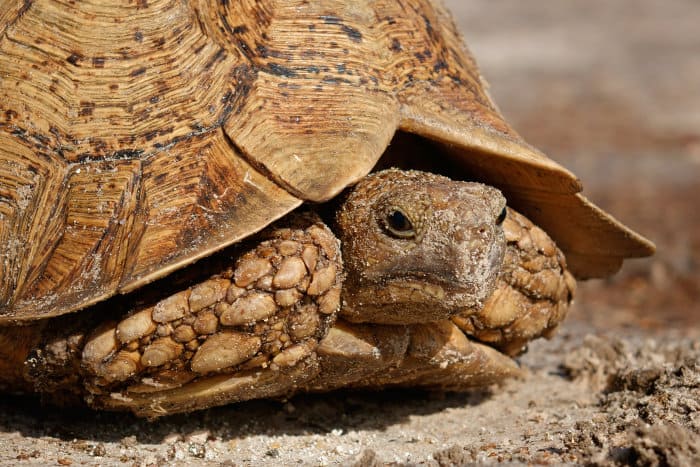
In the wild, leopard tortoises do live between 50 and 100 years old. That’s if they can avoid the dangers that come with being young in a rather harsh world.
Tortoises are not exactly maternal, and once the females have laid their eggs – a clutch of 5-10, they move on.
When born, baby leopard tortoises are on their own. Luckily, they are very well-adapted to their environment, and the ability to retract into their little shells serves them well.
In captivity, leopard tortoises live between 30 and 75 years. These are wild animals though, and they’re used to their freedom, even if they move slowly through their habitat.
It’s reasonably common to keep leopard tortoises as pets, but experts strongly advise against it, as with all wild animals.
Predators

Because of their hard carapaces (shells) and handy ability to retract into them, the leopard tortoise has no real predators. Their shells are near-unbreakable to other animals, and they are quick to respond to any threat.
In fact, their main predator is the human. No surprise there, right? Humans are capable of breaking their shells and sometimes do so vindictively. But more commonly, they use the tortoise as a source of food.
There are also cases of birds, wildcats, dogs, mongooses, and even honey badgers successfully attacking these tortoises. But you can be sure it’s a relatively rare case.
Leopard tortoise habitat

This species of tortoise is the most widespread throughout the African continent. Their habitat stretches across sub-Saharan Africa, from Sudan to the very tip of South Africa.
Interestingly, they get distinctly larger the further South you go. Suggesting the habitat and conditions here are more conducive to their growth.
Within these arid regions of Africa, the leopard tortoise occupies a very varied habitat. You’ll find them in savannas, bush ‘veld’, and grasslands.
Handling wild leopard tortoises
You should never pick up wild leopard tortoises in the winter months. It’s extremely disorienting for the animal, and they often react by ejecting their stored urine to deter predation.
This urine is an important resource for its survival during hibernation. Unless the tortoise can then find water within a short distance, it could die of dehydration.
If you come across a leopard tortoise in the road and want to save it from oncoming traffic, handle it carefully. Move it slowly and keep it close to the ground.
Don’t try to hold it up to you and try to see its head slowly come out – it won’t. You can watch it once you’ve put it down on the side of the road it was moving towards. And eventually, you’ll see it peeking out.
Leopard tortoise diet
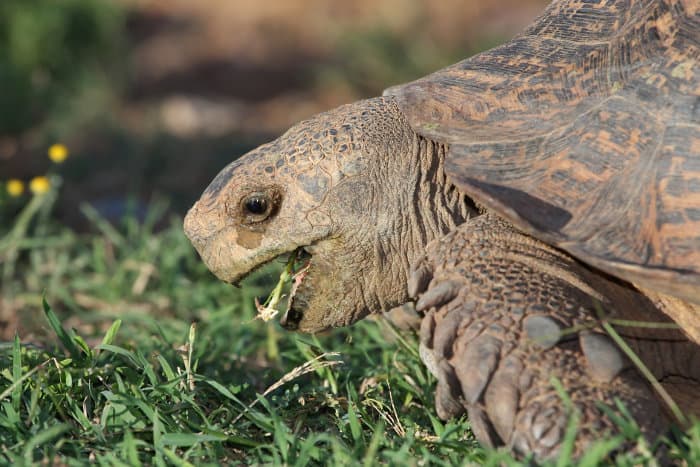
The final factor that has a big impact on how big adult leopard tortoises get, is their diet.
Tortoises are herbivores and feed primarily on grasses, thistles and succulents. Seeds pass through their systems fully intact, making them a great distributor of plant life.
On occasion, they also eat hyena faeces and bits of bone to obtain calcium. They need this for their eggshells, and for good bone development. A plant-only diet just doesn’t quite cut it!
The African Leopard Tortoise

So, now you know everything you need to know about the leopard tortoise’s size and growth – as well as lots of interesting little details we wanted to share.
Because when you’re dealing with such an interesting animal, you just can’t stick to the bare basics.
If you want to spot this animal and many, many others, consider a tailor-made African safari! It really is the best way to see these animals comfortably in their natural habitat.
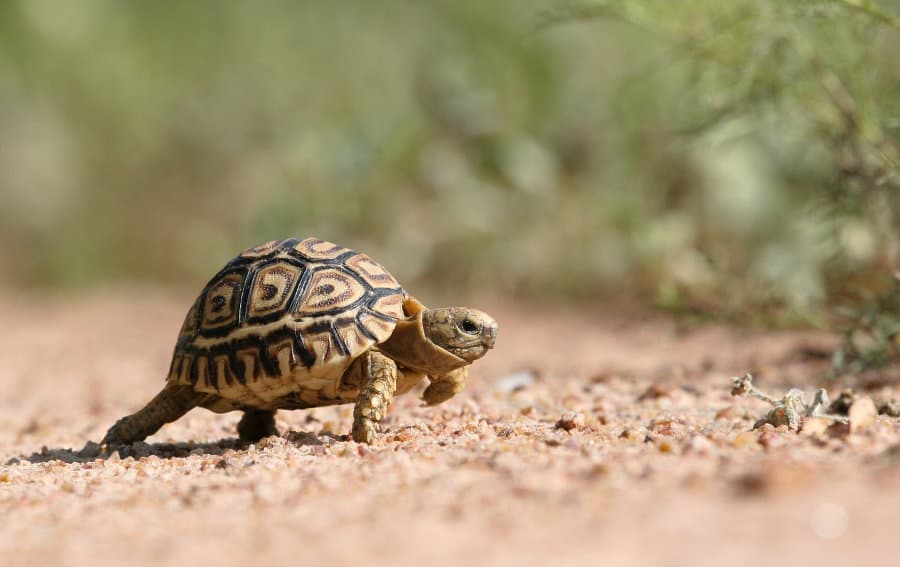
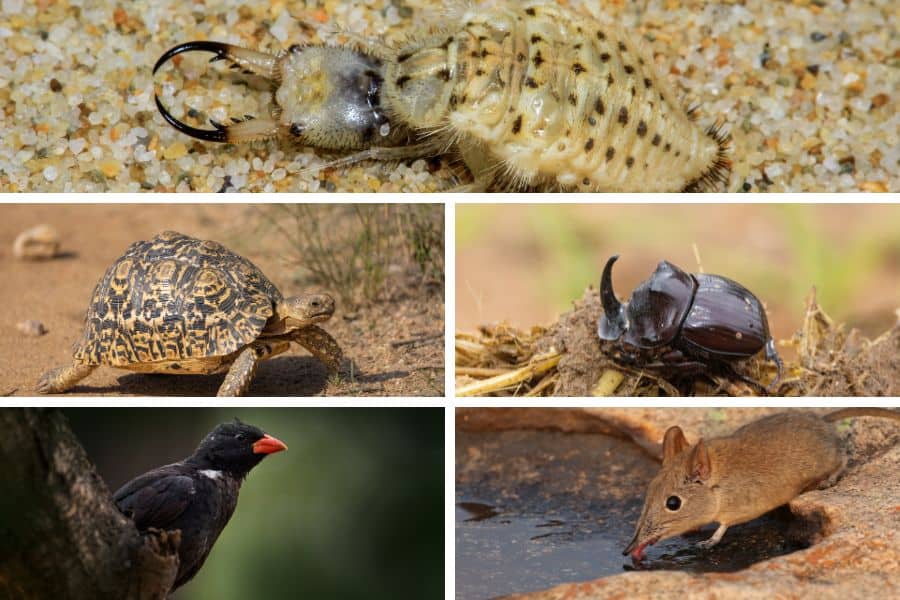
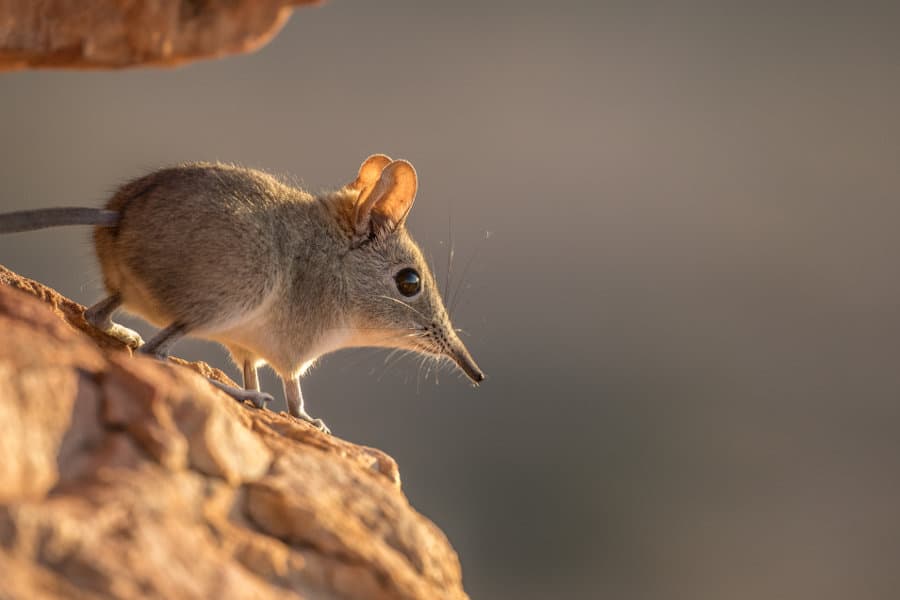
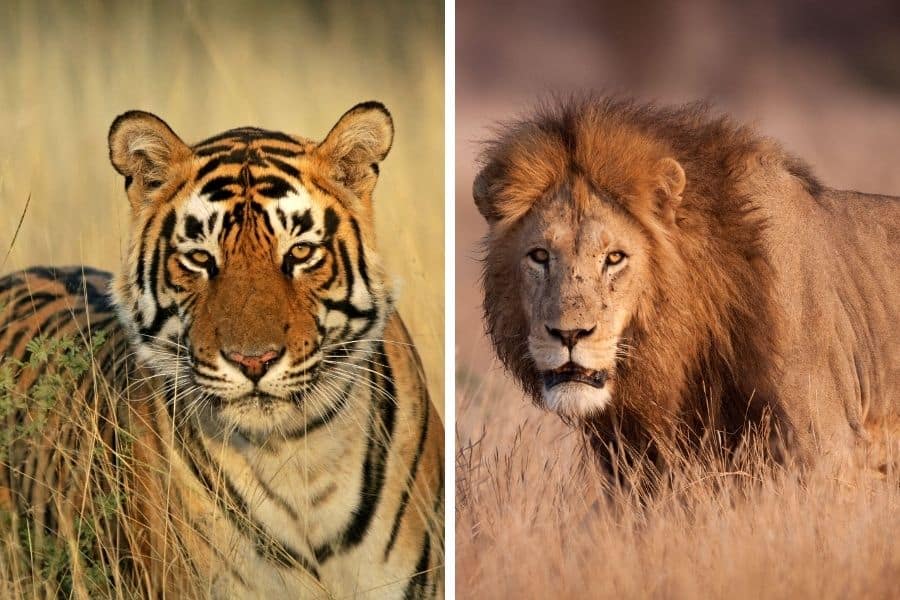
We got a young leopard tortoise from a pet store in California, USA. This was a gift to our son for his 5th birthday. I have always taken care of Bella. We were told the tortoise was about 5 years old at the time. Now our son is 31 years old and so is Bella.
As I read about leopard tortoises in your article above. You mentioned not picking them up in winter because of hibernation. I have never heard that they hibernate. I probably have been getting my information from American leopard tortoise online resources. I have always kept our leopard tortoise heated during winter in the garage with a heat lamp and timed light for day/night. In summer we leave him in the backyard. It’s nice weather. Let me know if you would like pictures of Bella.
Hi Margaret,
Thanks for sharing your story about Bella! 🙂
She must be huge now, how big is she?
In nature they may hibernate, yes, though in captivity of course it’s a different story.
You are welcome to share some pics, feel free to get in touch via the contact page.
Best,
Michael
The turtle in the last shot with the lion looks like a sulcata.
Hi Myles,
Thanks for your valuable comment.
The African spurred tortoise, also known as the sulcata tortoise, is native to the Sahara desert.
Yet this picture was taken in the Kruger park, in South Africa.
Shell patterns tend to fade in mature leopard tortoise specimens, hence the potential confusion with sulcatas.
It’s definitely a leopard tortoise though.
Cheers,
Michael